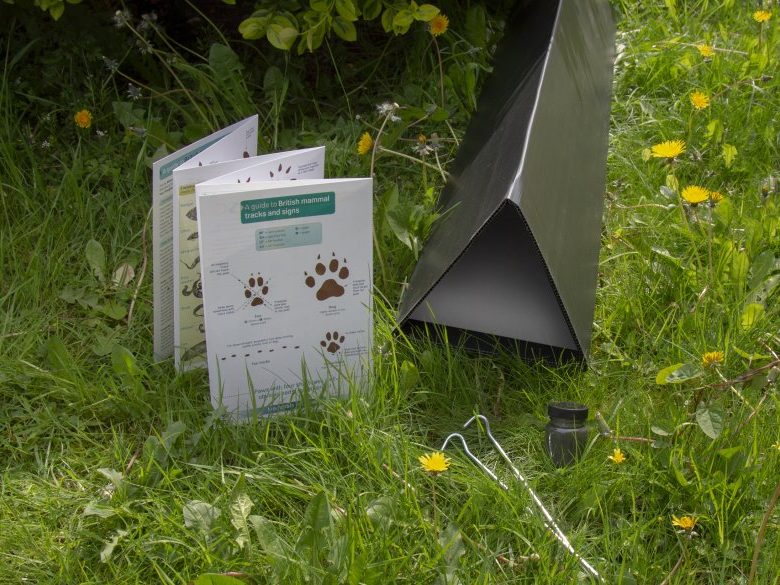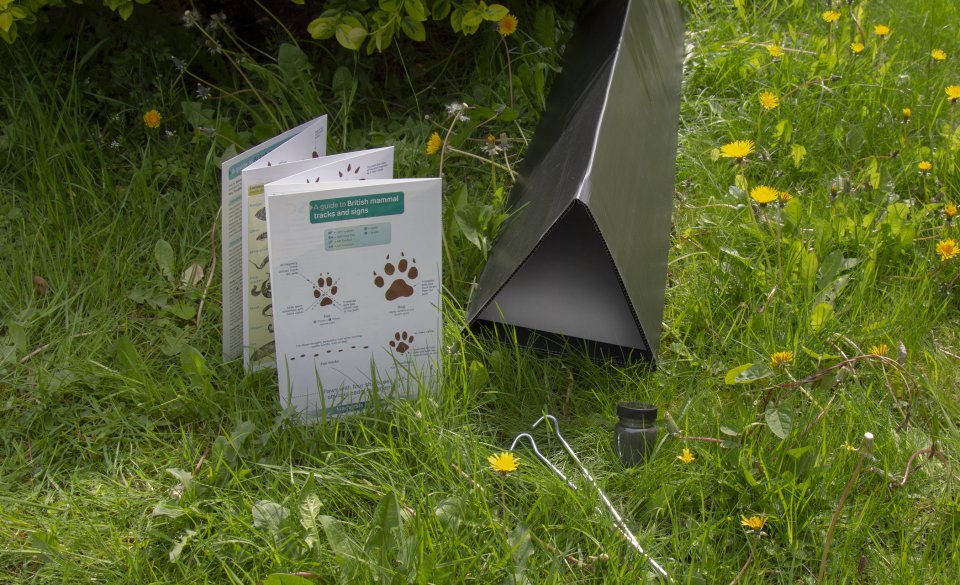
Footprint tunnels are a useful, cost-effective, non-invasive tool for presence/absence surveying of small mammals. Food left in the centre of the tunnel encourages passing animals to walk over the ink pads, leaving their footprints on the tracking paper. With the use of a guide, the mammal in question can then be identified from the footprints left behind.
There are a number of benefits of using footprint tunnels. As they are non-invasive, the tunnel can be set up and left without fear of harming animals and are a good way to assess a site prior to in-depth species studies. They are also quick to check compared to other methods. For example, although camera traps are also useful for presence/absence studies, it can be time consuming to sift through captured images and videos.
As is useful for any piece of equipment, footprint tunnels (and their replacement materials) are very light (55g), and so are easy to take out into the field. However, as they are quite long (119.5cm) they can be cumbersome to transport. Despite this, transportation is made easier due to their ability to be flat packed – their plastic construction allows for them to be folded easily.
The NHBS Mammal Footprint Tunnel comes flat packed with helpful assembly instructions. When assembled, the tunnel is wide enough to fit a full sheet of A4, saving you the trouble of cutting paper to size to use in the tunnel, and is large enough to allow access to animals such as hedgehogs but not larger mammals, such as foxes or badgers.
In addition to the kit you will need eight paperclips per trap, masking tape, some vegetable oil to mix with the included charcoal to make the ink, and some bait (chopped unsalted peanuts or dog/cat food is recommended).
Our work building is situated alongside the river Dart, only separated from the riverbank by a small wall and we wanted to find out what mammal species we have in the vicinity of our building. So we field tested a single NHBS Mammal Footprint Tunnel and here we share what we found and our thoughts on the tunnel.
How We Tested

The above image shows the kit contents: to the left is the tracking plate and on the right is the flattened prism that forms the tunnel. In the top right corner are the pins that secure the tunnel to the ground, charcoal, paper and masking tape (please note, paper, masking tape and vegetable oil are not included in the kit).
To set up the tracking plate, a sheet of A4 paper is placed at each end and secured with tape (ordinarily the paper would be secured with paper clips as is suggested in the instructions). Then we put several strips of masking tape across the centre of the tracking plate to create a large area of tape. The ink (a mixture of charcoal and oil) was painted on the two grey strips across the centre and bait was placed in the central area between the two ink pads.

We first set up the trap next to a bird feeding station – we already knew that the feeder is visited by voles and squirrels, and so would be an ideal place for us to put the footprint tunnel to the test! Although the feeder is raised, we opted to put the tunnel on the floor so that it was accessible to small mammals. As the tunnel was not placed on soft ground, bricks were used to secure the tunnel in place rather than the metal pins included in the kit. For bait we used bird seed as this is what the animals are used to eating at this particular location. The trap was left here for one (wet) night.

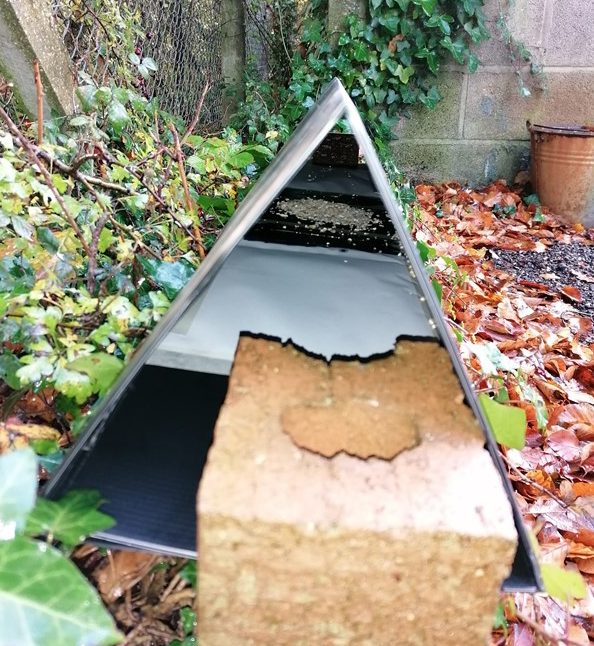
The second set up was just outside of our office alongside the wall that bordered the river. We hoped that this area would be patrolled by a number of small mammals, particularly hedgehogs as they have been seen here before. We baited the tunnel with cat food and the trap was left for three nights over the weekend – being outside office hours, we hoped disturbance would be minimal during this time.
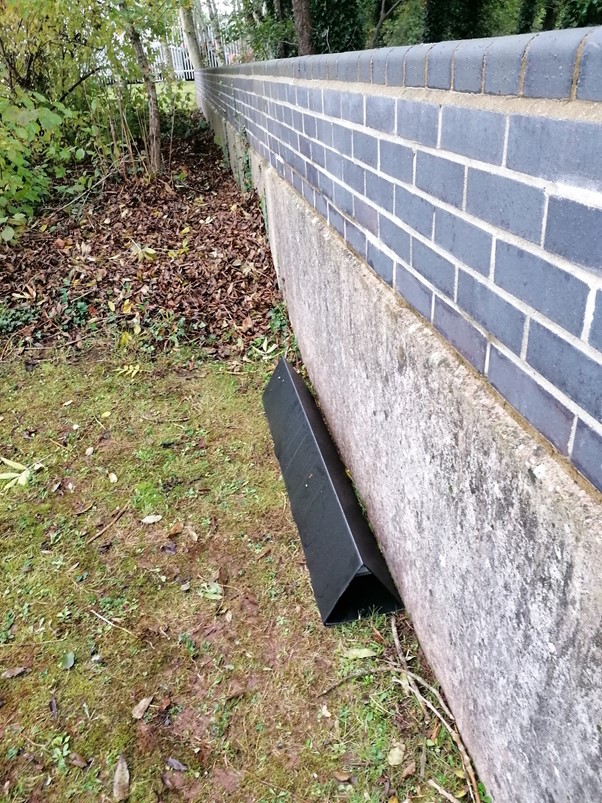
The second placement of the tunnel
What We Found
The inner tracking plate was slightly fiddly to insert into the assembled prism tunnel, and we found that it was much easier to assemble the (pre-bent) prism round the tracking plate rather than sliding the tracking plate in. We used masking tape to secure the paper rather than paper clips as is suggested; this was beneficial when trying to get the tracking plate inside the tunnel as it was more secure than using paper clips.
In order for the bait to stay in place in the centre of the tracking plate the bait needed to be inserted after the tunnel was assembled. And so, because of the length of the tunnel, placing the bait into the tunnel was a little awkward. We found using a trowel to insert the bait made access easier, especially when trying not to disturb the ink.
In the first set up we were pleased to see that a vole had visited our tunnel and that the recording paper had stayed relatively dry despite the very wet weather. Sadly for our second attempt our bait of cat food was eaten by a cat!
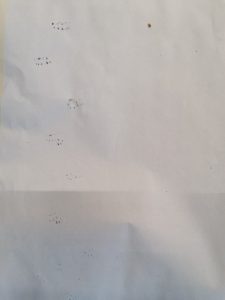
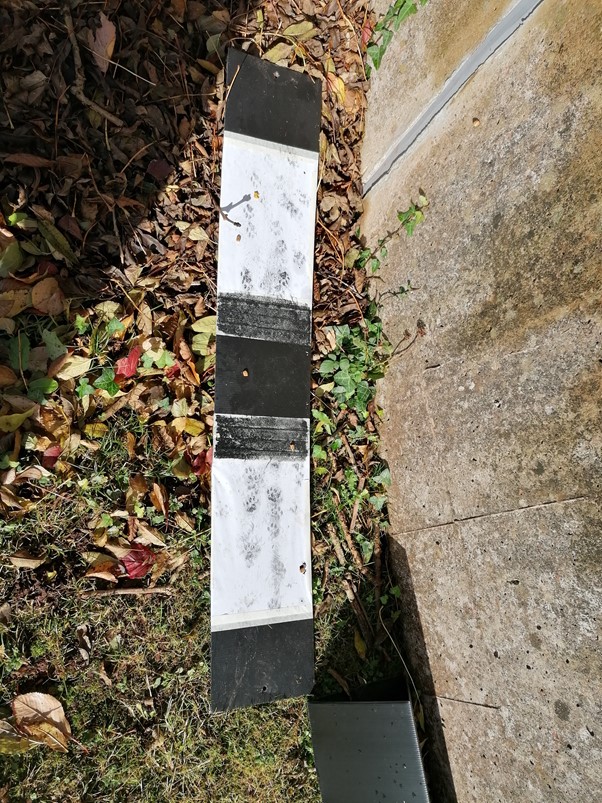
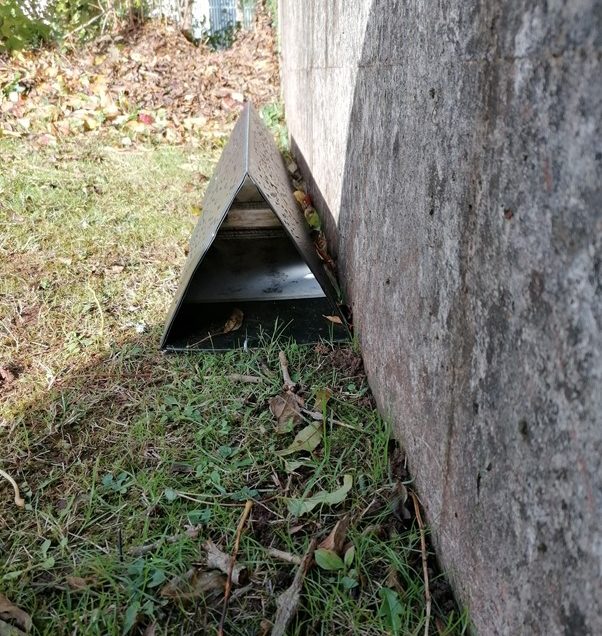
Our Opinion
The Mammal Footprint Tunnel is an easy-to-use, lightweight monitoring device and a great tool for many small mammal presence/absence studies. Due to its simplicity and low cost, it is ideal for students or for those involved in public engagement.
Despite its light weight, its size makes it a bit of an awkward shape to carry, both when assembled and when flat packed. However, its ability to be flat packed allows for multiple tunnels to be transported without any additional difficulties. Placing ink on the outer edges of the paper may result in more footprints- in our experience something seemed to enjoy munching on the paper before getting to the actual bait. Getting the ink to the right consistency takes some trial and error, but we would recommend using less oil to achieve a thicker ink so that any footprints left behind are as dark as possible so that they are easier to identify.
The pins were sufficient in securing the tunnel and saved it from being blown away by the wind, but a medium-sized mammal (a cat in our case!) could move the trap when secured in soft soil, so this is something to bear in mind when situating your trap.
Overall this is a very easy-to-use, affordable tool and we would highly recommend it as an effective presence/absence surveying method for small mammals.
The Mammal Footprint Tunnel is available through the NHBS website.
To view our full range of mammal surveying equipment, visit nhbs.com. If you have any questions about our range or would like some advice on the right product for you then please contact us via email at customer.services@nhbs.com or phone on 01803 865913.

